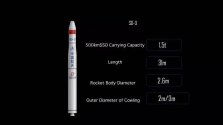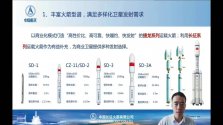Quite a bit to dissect here.
No, this is simply, utterly, and abjectly untrue. Aerobraking, for all intents and purposes,
is de-orbiting. Unless a celestial body simply doesn't
have an atmosphere, the absolutely
overwhelming majority of dV when de-orbiting is due to atmospheric effects. Hell, even LEO satellites are subject to aerodynamic drag that eventually brings them down. Getting into LEO calls for about 9 and a half kilometers per second of dV. De-orbiting from LEO? It takes between 60 and 90 meters per second.
Don't believe me? Take it from the Space Shuttle's own crew manual:
This is because, all that is needed for a de-orbit burn is sufficient impulse to lower a vessel's Perigee such that it encounters enough aerodynamic drag to prevent the vessel from "rebounding" (if you know much about astrodynamics, you'll understand) out of the friction medium as it reaches its Apogee. From this point, the drag compounds and compounds, as (again, if you know much about astrodynamics concepts or really just basic kinematics you'll understand) the lower velocity results in a lower perigee, physically necessitating that the longitude of perigee is exactly 180 degrees (reference frame being the celestial body) offset from the vessel, which is why V is typically considered to be the 1st derivative of altitude in orbital mechanics. Let me put it in simpler terms as well, just in case you fancy a hand to hold: In orbits, velocity is *everything*. When a vessel in orbit reduces its velocity, not only will it simply "slow down," but it will also "fall down." This manifests as the semi-major-axis decreasing with the decrease in velocity - which - if the impulse is transient (a kinematically ideal/most efficient usage of dV), results in the apogee being at the very spot the burn was initiated, and the perigee being on the exact opposite side of the orbit, with the vessel's altitude decreasing all the way to the perigee.
Make sense? Cool. Now as a result of this, consider what happens when atmosphere gets thrown into the equation at perigee. That atmospheric drag is an impulse, just the same as an engine. As a result, while the vessel is decelerating, the perigee is staying exactly on the opposite side of the orbit, and thus the vessel is decreasing in altitude until it reaches it. However, as the vessel decreases in altitude, the aerodynamic drag increases, and the perigee falls faster and faster, and this this continues until the semi major axis is no longer greater than the radius of the celestial body, which is what we know as a ballistic trajectory with no "real" perigee (other than the ground, since the mathematical perigee is below the surface of the body).
Thus, even a tiny tiny double digit meter per second burn can de-orbit a spacecraft that required nearly 10,000m/s of deltaV to achieve that orbit. If you'd like further reading, I encourage you to take a look at this rather well explained Stack Exchange post:
This link does not show what you think this link shows lol. Yes, it's absolutely true that an unplanned, unguided, non-functional satellite that is experiencing the terminal stages of orbital decay (as a result of that atmospheric drag I mentioned, which even satellites are affected by) is difficult to predict the exact impact point of. There are so so so many variables that go into it. Aspect of the vehicle (which way it's pointed basically, since different orientations produce different aerodynamic effects), exact velocity of the vehicle, rotation of the vehicle, structural failures during entry, aerodynamic induced oscillations or rotations, etc. all have a huge effect on the final impact point of these spacecraft, and seeing as how it's impossible to know all of those variables beforehand (because again, it is unguided, uncontrolled, and unplanned), we do have trouble predicting exact impact points.
However, this is not what a controlled re-entry looks like. Even non-aerodynamic entry profiles (mostly, at least, since Apollo was capable of offsetting its center of mass to produce a slight lifting body effect) such as during the moon missions were able to achieve an impressively high degree of accuracy - well within the margins needed to nuke something, and that was in the 60s!
Modern controlled re-entries with vehicles specifically designed for maneuver in these flight regimes and thermal load conditions are entirely capable of achieving sub 100 meter accuracy any day of the week.
Thus, again, while there are plenty of issues inherent to Orbital nukes, the kinematics and targeting really aren't one of them.



